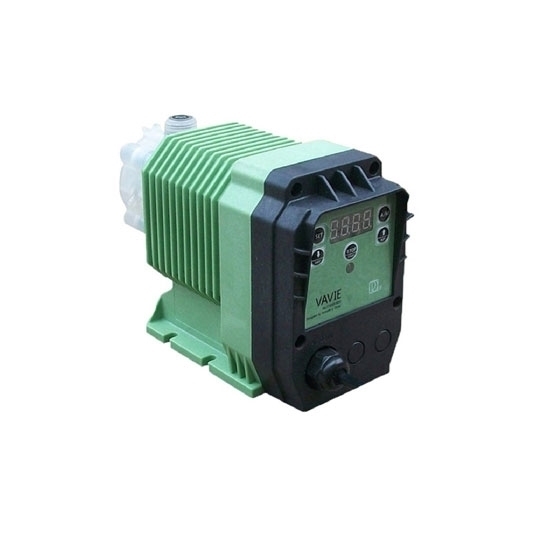How Does a Dosing Pump Work?
How does the dosing pump measure? The dosing pumps of the same model and specifications have different internal structure designs, so the metering methods are different. For example, the working principles of plunger and diaphragm dosing pumps are different, and there is also a difference in metering accuracy.
1. Diaphragm dosing pump
The volume change in the pump cavity is formed by the continuous reciprocating motion of the diaphragm, and the flow direction of the material is controlled by the one-way valve, so as to play the function of metering and transporting the medium. The key component of this diaphragm dosing pump is the diaphragm composed of multi-layer composite materials, which not only ensures mechanical strength, but also improves acid corrosion resistance, and can transport various chemical liquids without leakage.
2. Plunger dosing pump
The hydraulic end of the pump is composed of the pump head and the upper and lower check valves of the plunger. During operation, the plunger is driven by the turbine worm of the power end to reciprocate, and cooperate with the pump head to form the volume change of the pump cavity. It can generate vacuum suction to suck in and discharge materials. Compared with the diaphragm dosing pump, this metering method has higher accuracy, so it is more suitable for the refined transportation process. The downside is that the use of packing seals sacrifices a certain degree of tightness, and there is a leakage of several drops per minute during transportation.
3. Hydraulic diaphragm dosing pump
The diaphragm in the hydraulic end is its main component. The diaphragm and the pump head cooperate with each other to form a pump chamber without a dynamic seal. The working principle and metering method are basically the same as the diaphragm dosing pump. Only the diaphragm is driven by the wave pressure. to keep reciprocating. The advantage of this metering method is that it has the tightness of the diaphragm pump and at the same time ensures the metering accuracy of the plunger pump. In addition, the hydraulic diaphragm gauge pump is usually equipped with double diaphragms, which can still use the second layer of the diaphragm to ensure that the material does not leak out when the diaphragm ruptures due to an accident. It is a higher-standard safety production pump.
In summary, we have simply understood how the metering pump is metered. ATO provides a dosing pump that is available with a flow range of 1.08L /h, 4.2L /h, 21.6L /h to 31.2L /h, customers can choose the appropriate dosing pump according to the transportation conditions and actual transportation needs.

